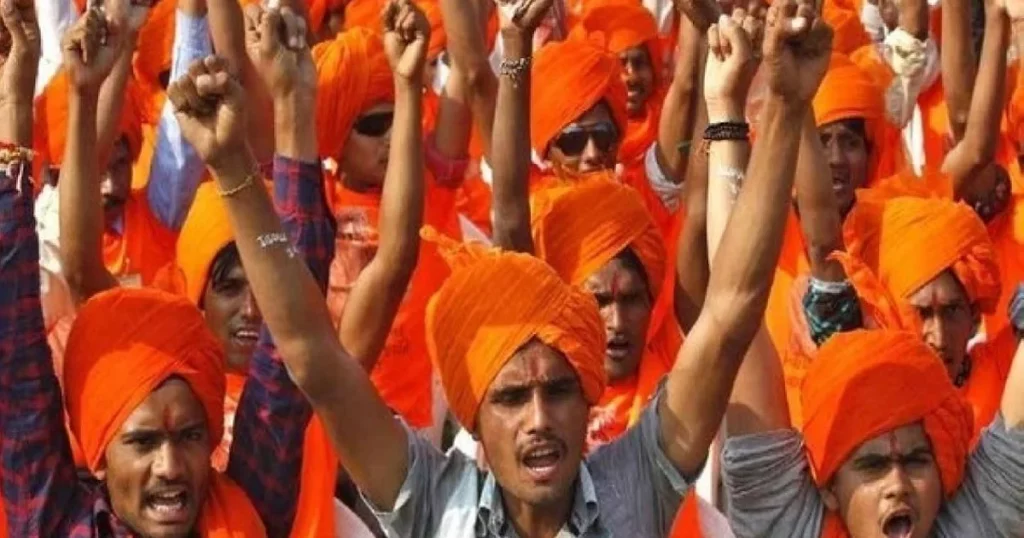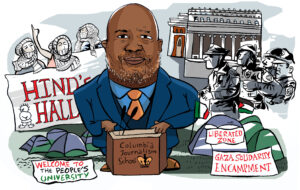
Will the BJP and Sangh Parivar’s power endure in the 2019 national elections in Uttar Pradesh and at the center?

Excerpted with permission from the essay “Remaking the Hindu/Nation: Terror and Impunity in Uttar Pradesh.”
Majoritarian State: How Hindu Nationalism is Changing India, edited by Angana P. Chatterji, Thomas Blom Hansen and Christophe Jaffrelot, is published simultaneously by Hurst, Oxford University Press, and HarperCollins India (2019).

And will it signal a twenty-first-century, post/colonial turned neo-imperial rendition of despotism, the reign of majoritarian fascists and micro-fascism in India? An excerpt from the book of essays “Majoritarian State: How Hindu Nationalism is Changing India,” which traces the ascendance of Hindu nationalism in contemporary India.
Muzaffarnagar 2013 marked Uttar Pradesh as the next frontier in Hindu nationalism’s incursion into the body politic. Between 27 August and 17 September of that year, massified violence targeted the Muslim community in Muzaffarnagar. At the onset, two Hindus accused and killed a Muslim youth for allegedly sexually harassing a Hindu woman and relative. In the violence that ensued, sixty-two people died, ninety-three suffered injuries, women were gang-raped, and approximately 40,000 to 50,000 people were displaced. Three months after the violence, relief centres were shut down.
Majoritarian contours
Ideologically adherent to Hindutva (‘Hindu-ness’), and premised on Brahmanical dominance, Hindu nationalists are amplifying their seemingly irreversible crusade to render India into a Hindu state. Uttar Pradesh, foundational to this experiment, has been witness to the aggressive infiltration of Hindu nationalists into its vital institutions in recent years, including the election commission, bureaucracy, media, and academic establishments, together with efforts to curtail the judiciary into compliance with majoritarian mandates.
Two recent ballots in the state—the parliamentary elections of 2014, led by the BJP and supported by the Sangh Parivar, as well as the state assembly elections of 2017—delivered a decisive victory for Hindu nationalists.
At the state level, the BJP had previously governed Uttar Pradesh from June 1991-December 1992 and again from November 1999-March 2002, before ascending to power in March 2017. Expressly, 2017 spiralled the negation of the rights of religion, caste, and tribe-based minorities.
The installation of Yogi Adityanath, reportedly a far-right ideologue, as chief minister, underscored the tensions and strategies prevalent in-between far-right Hindu nationalist organisations… and the BJP… His ascendance was meant to appease the militant wing of Hindu nationalism and constrain vigilante action. Simultaneously this served to signal the further legitimation of hyper-authoritarian imperatives within the state government and sanction and normalise extremist movements within civil society.
In Uttar Pradesh, Hindu nationalist groups command the support of a sizeable segment of Hindu civil society. The everyday and episodic targeting of vulnerable communities is supported by the deeply rooted structural inequalities of caste, class, and hetero/normative gender, strengthening cultures of violence and facilitating governance through fear. Hindu cultural dominance is the historical and political precursor to Hindu majoritarianism.
Subtext
The BJP- and Sangh Parivar-led arrival (2014 onward) is borne of a multitude of convergences. Contingent to this is perhaps the long- and deeply-held commitment that extends well beyond the Hindu Right, that Hindus are privileged to India. Hindu cultural dominance is the historical and political precursor to Hindu majoritarianism.
[…] The significance and scope of the ‘Hindu’ as majoritarian, the nationalist Hindu, is not merely prefatory to the BJP’s or the Sangh Parivar’s current ascendance… The translation of the above premise into political strategy has been used to varying degrees by the dynastic Congress government… The discontinuity between the Congress and the BJP lies perhaps in the degree to which Hindu ascendancy was prioritised or kept in check by previous governments, including the BJP central government of 1998–2004, and the current BJP/Modi government’s actions in fascisizing majoritarian politics. […]
The communal politics of the 1950–60s gave way to the racialisation and mass killing of Muslims and Sikhs in the 1980s. In-between, in 1975–77, Indira Gandhi imposed a national emergency. Post-Emergency, Hindu cultural dominance mutated into and contoured Hindu majoritarianism. The reach and impact of the Sangh Parivar across India’s heartland intensified, galvanising the onset of the movement that led to Ayodhya 1992, Bombay 1992–93, the BJP in power in central government in 1998–2004, Gujarat 2002, Orissa 2007–8, Muzaffarnagar 2013, and the Modi/BJP victory of 2014.
Through the above, Hindu/nationalists sought to progressively control the symbolic, idiomatic, and functional aspects of statehood to varying degrees. These aspects of statehood include: security, territory, and population (Michel Foucault). Security: weaponisation, militarisation, control over and production of information…; Territory: rendering India as synonymous with Hindu-ness, … Kashmir as integral to India …; and Population: the ascendance of the majority population… as a strategy of governance.
The expanse of power captured by the BJP and the Sangh Parivar incrementally authorised the co-production and conjoining of Hindu nationalism (wherein nationalism is modified by Hinduism) with nationalist Hinduism (wherein Hinduism is modified by nationalism, majoritarianism, and statehood), a nonpareil characteristic of the post-2014 present. …
Uttar Pradesh had the largest incidence of state-wide annual counts of religionised violence from 2010–16. Accompanying Adityanath’s take-over as chief minister, Uttar Pradesh recorded sixty incidents of religionised violence in 2017, the highest in the nation.
Recent history
In 2014, the State Minorities Commission of Uttar Pradesh stated that it had received 18,445 complaints between 2009 and 2014 […]
Between 2011 and 2014, the number of cases filed drawing on the provisions of the Uttar Pradesh Prevention of Cow Slaughter Act, 1955, recorded a sharp increase […] Between January and June 2015, 4,400 cases of cattle slaughter had been registered. In September 2015, in Dadri, Uttar Pradesh, after a rumour circulated, Mohammad Ikhlaq was reportedly accused of cattle slaughter. A Hindu nationalist mob attacked Ikhlaq and his family; Iklaq’s son survived, albeit with critical injuries, even as Iklaq did not.
Uttar Pradesh had the largest incidence of state-wide annual counts of religionised violence from 2010–16… Accompanying Adityanath’s take-over as chief minister, Uttar Pradesh recorded sixty incidents of religionised violence in 2017, the highest in the nation. Between March 2015 and March 2016, RSS shakhas (branches) in the nation witnessed ‘the highest growth since 1925’, […] with 8,000 shakhas functioning in Uttar Pradesh in 2017. In February 2018, in Muzaffarnagar, RSS leader Mohan Bhagat stated that, if called upon, the organisation was positioned to mobilise an army within three days. […]
Repressive authorisations
The tentacles of majoritarian governance stretch and expand from state (Uttar Pradesh) to country (India) and like-minded diasporic enclaves in mobilising an ultra-sophisticated technological and military arsenal, and an aggressive regional presence. The cumulatively partisan state unfolds in different registers […] constitutive of a crisis democracy, of states of exception without-end.
Will the BJP and Sangh Parivar’s power endure in the 2019 national elections in Uttar Pradesh and at the centre? Will it signal a twenty-first-century, post/colonial turned neo-imperial rendition of despotism, the reign of majoritarian fascists and micro-fascism in India?
In a video which surfaced in 2014, Adityanath reportedly stated that: ‘If [Muslims] take one Hindu girl, we’ll take 100 Muslim girls. If they kill one Hindu, we’ll kill 100 Muslims.’
‘We are submerged in pools of fear,’ a Muslim woman from Uttar Pradesh tells me. ‘The pools are deep. Unending. Suffocating. Like a well. I cannot get out. We cannot hear each other.’
‘What connects the pools to each other?’ I ask. She says: ‘Shreds of skin. Lost memory. Forgetting.’






